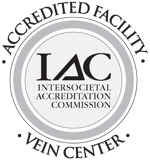When it comes to treating veins, one of the most common cosmetic procedures performed by our vein doctors is sclerotherapy – the use of a liquid chemical called a sclerosant that is painlessly injected into the affected vein.
Sclerotherapy is prescribed most often for spider veins and smaller varicose veins that, generally, do not cause any additional health issues. It may also be an alternative treatment for larger varicose veins. It is a minimally-invasive procedure which can be completed without the need for anesthesia and performed in one of our many vein treatment centers in New Jersey.
In addition, sclerotherapy is a popular choice for spider vein and varicose vein issues since it costs less than surgery, requires no stressful or time-consuming hospital stay, has easy and unobtrusive post-treatment care, and enables an immediate return to work and daily activities in most cases.
The following are some frequently asked questions we get regarding the sclerotherapy procedures for spider veins:
How does Sclerotherapy work?
As we mentioned previously, a liquid chemical called a sclerosant is injected into the affected vein. This FDA approved solution causes an irritation to the inner lining of the vein, ultimately causing it to close off. Over time, the treated vein is absorbed and disappears enough to not be seen.
Is the Sclerotherapy treatment painful?
It’s similar to receiving a vaccine, so it’s not painful. You may feel a slight prick during application. In some cases, a topical numbing agent may be used in patients, but it is not necessary. Just like receiving a shot, we cleanse the area that will be treated, then use a very fine needle to inject the solution into the affected vein(s). After treatment, you only need apply a small bandage.
Are there particular areas on the body where Sclerotherapy can be used?
Sclerotherapy can be administered almost anywhere on the body as long as the veins aren’t very large, such as with advanced varicose veins. For spider veins, this is a preferred treatment over laser procedures.
Is the Sclerosant safe to use? Any side effects?
Sclerotherapy has been used as a treatment for varicose and spider veins for more than 150 years. But that’s not to say there’s nothing new about it. As you can imagine, 150 years ago the sclerosants were not nearly as refined as they are today, and neither were the delivery techniques.
While extremely rare, allergic reactions to the medication may occur. This is why you need to choose a vein treatment center with vascular doctors trained to treat that condition. Blood clots or deep vein damage may occur although these are also exceedingly rare. Our vein doctors will discuss the steps you can take to minimize these dangerous risks, and the signs to look out for that call for emergency treatment.
Additional possible side effects that you might experience after sclerotherapy treatments include:
- Bruises at the injection site, which normally fade shortly after treatment.
- Itchiness in the treatment area.
- Spots or red blood clusters around the treatment area, which go away soon after treatment.
- In some cases, skin discoloration may occur but typically disappears 6 to 12 months later.
- Potential scarring if the scelrosant is not applied to the vein properly, which is why it is important to have a qualified professional perform the treatment.
How long does it take for the veins to disappear after Sclerotherapy?
As the initial inflammation from the injection subsides, some veins may disappear completely, others may show little islets or isolated beads of clots along the track of the vein.
Generally speaking, most patients should expect an improvement of at least 50-60%, over a few weeks after a single treatment. Follow-up visits to fine tune the treatment are common. In our experience, most spider veins disappear between 2 weeks and two months, but many factors affect this, including the technique of injection, the type, and strength of the solution used in sclerotherapy, the density and thickness of the vessels in a given area, as well as the skin complexion of the patient.
Are there different types of Sclerotherapy treatment?
Yes! There are many different types of sclerotherapy treatments available for varicose and spider veins removal. Injection sclerotherapy is by far the most popular way to treat spider veins, reticular veins, and even some varicose veins. There are several basic forms of sclerotherapy, which can be used alone or together, thereby allowing the physician to tailor each treatment to your individual needs. The primary methods of treatment are: ultrasound-guided sclerotherapy, liquid sclerotherapy, foam sclerotherapy and micro-sclerotherapy.
Who should not get Sclerotherapy treatment?
Pregnant or nursing women need to avoid this procedure, since injectable chemicals may be harmful to the fetus or get into breast milk. Even though pregnancy is one of the leading causes of spider or varicose veins, always tell your doctor if you are pregnant or nursing so that a different treatment option may be considered, or better timing chosen for your vein solutions. Most varicose veins disappear after the birth of your child. Those that do not, can be readily treated by the expert vein doctors at the Vein Institute of NJ. Also, tell your doctor if you have any allergies to sclerosant, or if you have had blood clots or inflammation in your legs (deep vein thrombosis).
Should I travel or avoid the sun after receiving Sclerotherapy?
Travel often involves long periods of immobility in a car or an airplane and therefore is best avoided for at least two weeks after a leg sclerotherapy treatment session. Since sun exposure of an inflamed area increases the risk of pigmentation, you should avoid tanning until all bruising has disappeared.
How much does Sclerotherapy treatment cost?
Sclerotherapy cost varies from patient to patient. The cost to you will depend upon how much of the sclerosing solution is required to treat your visible veins. You may also require repeated treatments, which can also affect the cost. Also, as sclerotherapy for spider veins is considered a cosmetic procedure, insurance will not cover it. At the Vein Institute of NJ, our Sclerotherapy treatment can range between $300 - $900 per visit dependent upon the vein size and number of injections necessary.
Want to learn more? By scheduling a complimentary consultation with one of our board-certified vascular doctors at the Vein Institute of NJ, we can go over the risks and rewards as it may pertain to your spider veins. Schedule your appointment today and get those beautiful legs you wanted.









.jpg?width=944&name=Castle-Connolly-Top-Doctors-Emblem-Large%20(4).jpg)